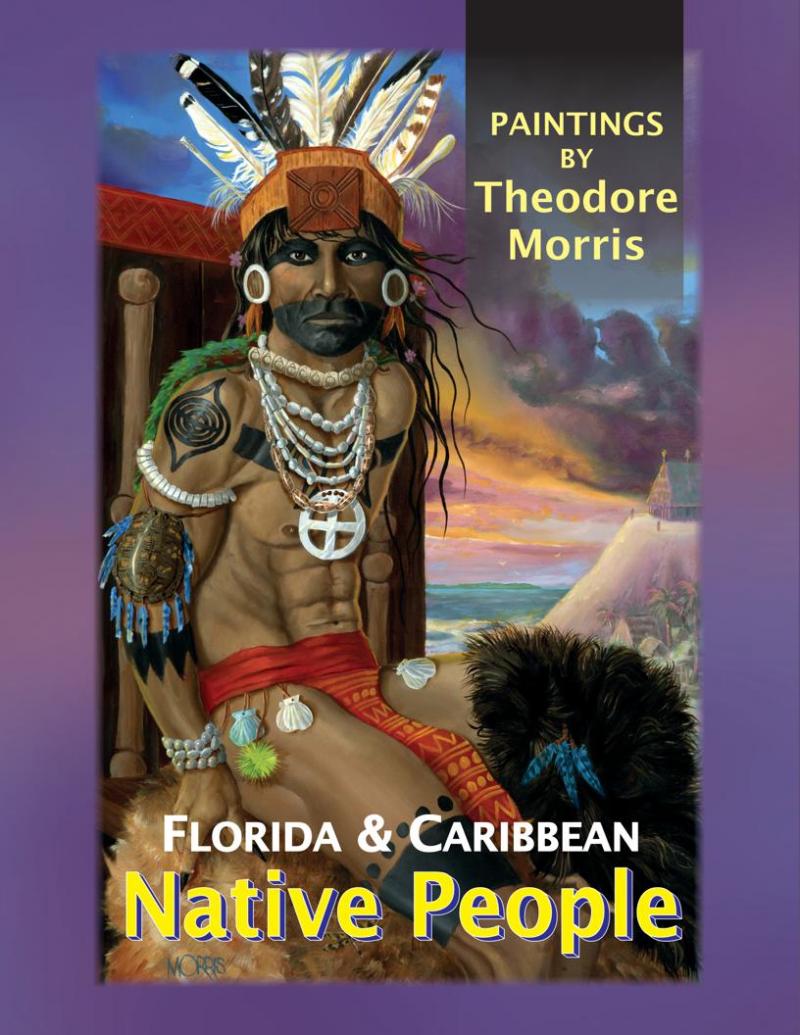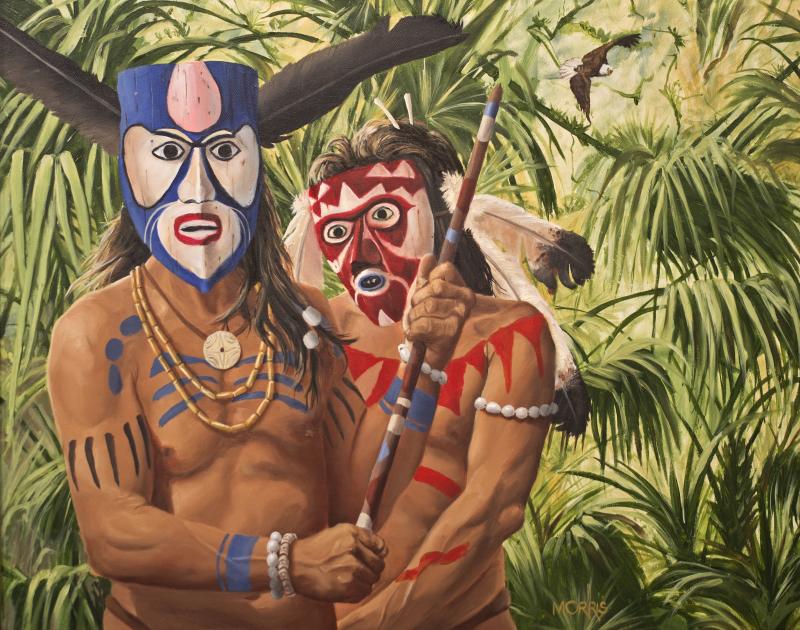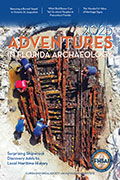When the Seminole Indians first appeared in Florida in the 1700s, they occupied lands where other Native Americans had lived for thousands of years. Tribes such as the Calusa, Timucua, and Apalachee lived in Florida long before European contact in the 1500s.
While the archaeological record contains tools, pottery, and other artifacts, the visual record of pre-European contact people in Florida is very limited.
Since 1992, artist Theodore Morris has dedicated his career to creating realistic oil paintings depicting Florida’s prehistoric and indigenous populations.
Morris is one of a group of nine artists whose work will be shown in the exhibition “ArtCalusa: Reflections on Representation” at the Brevard Museum of History and Natural Science in Cocoa, July 17 through December 11, 2015.
“About 1988, I started getting into Florida history,” says Morris. “I got involved with archeological digs and the archaeology community.”
Morris was asked to create a fundraising poster depicting Florida’s native people for the Florida Anthropological Society.
“I went to the library to get some visual reference material, and there was none,” says Morris. “There was some weird, far out things that people had drawn over the years, so I went back with the archaeologists and we pieced together what they would have looked like.”
With experience as both a commercial artist and painter, Morris used descriptions from reliable historical documents together with artifacts discovered by archaeologists to create realistic representations of Florida’s first people.
“I love history and I love art, and it kind of all just melded together,” Morris says.
Before Morris started painting depictions of Florida’s indigenous peoples in consultation with archaeologists, images of prehistoric and early tribes were either non-existent, notoriously inaccurate, or so fanciful that they had no real educational value.
Morris does extensive research to ensure that his images are realistic, going as far as participating in archaeological excavations.
“Well, that was the number one priority, to make them as historically accurate as possible,” says Morris. “When I first got into it, of course, I didn’t know that much about them either. I knew about Seminoles, but not the early tribes, so it was a learning process for me.”
In addition to being shown in exhibitions throughout the state, Morris’s work has been assembled in the book “Florida and Caribbean Native People: Paintings by Theodore Morris.” Each chapter of the book focuses on different tribes, with Morris’s colorful paintings introduced by leading Florida archaeologists such as Keith Ashley, Bonnie McEwan, Brent R. Weisman, and Ryan J. Wheeler.
“From feedback I get from the archaeologists, they love to have their work put in context,” says Morris. “They’ll find a piece here and another piece over there, and to see them actually on an Indian (in a painting) makes it a little more fulfilling for them in a way, so they really like the idea.”
Archaeologists and anthropologists are scientists, but they embrace Morris’s artistic efforts to document Florida’s indigenous people.
“Ted’s artwork gives us a glimpse into the past that we don’t have records of,” says archaeologist Rachel Wentz.
“Through his research and his meticulous attention to detail, we’re able to see what Florida’s early natives might have looked like, some of their activities in life, really get a visual idea of what their life was like, prior to (European) contact. Of course we have no record of that. All we have is the LeMoyne engravings from the time of contact, before then all we know is what we can discover through the archaeological record.”
Morris’s oil paintings range from lifelike portraits of specific individuals to scenes of everyday life, with Native Floridians using tools and wearing body ornamentation that archaeologists can verify as being realistic depictions.
Six of Morris’s paintings will be part of the exhibition “ArtCalusa: Reflections on Representation,” including “Cacique Carlos,” which is the cover image for the book “Florida and Caribbean Native People.”
An opening reception for the exhibition will be held Friday, July 17, from 6pm to 8pm at the Brevard Museum of History and Natural Science, 2201 Michigan Avenue, Cocoa, featuring wine and cheese, live music, and some of the participating artists. Tickets are $25 and are available online at myfloridahistory.org, or by calling 321-690-1971 ext. 205.









